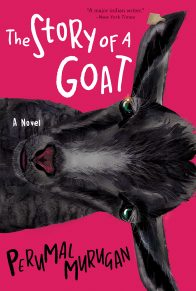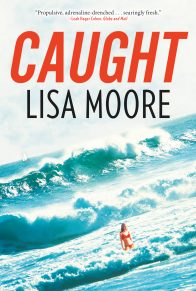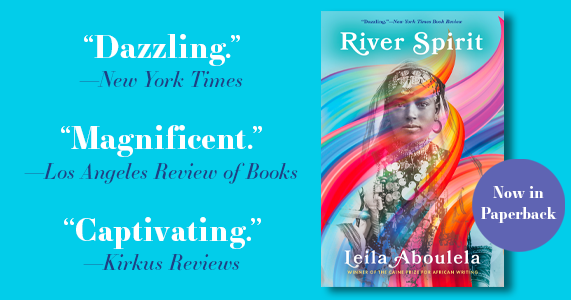It starts off there’s an alligator with its jaws open on a dirt road. The man’s back is bare and gleaming with sweat, and those trees they have, hanging with moss. The whole thing is overexposed. The sun is relentless. A crowd has gathered around the man and the alligator.
There are kids in the front, a little girl with blond hair and a silver helium balloon tied to her wrist.
The balloon looks hot. For some reason the camera lingers on the balloon. Perhaps the cameraman has forgotten what he’s supposed to be doing. The balloon looks like a hole burned through the sky. There’s no wind, but the balloon jerks when the little girl shifts her weight. It jerks to the side and bobs and then settles, becomes still. There isn’t a cloud. The little girl’s blond hair is spread over her shoulders and bits of sunlight come through it and some of her hair is full of static and it stands up and the sun makes it buzz with light. The alligator footage was part of a training video about safety in nuclear power plants.
Some plant in Ontario.
My Aunt Madeleine made a lot of industrial training videos in the 1970s and 1980s. For a while safety videos were her bread and butter. She had a niche. I was watching Aunt Madeleine’s archival footage and came across a man who puts his head in an alligator’s mouth.
There’s something low-budget about the event. The man is strutting around, trying to rouse the crowd. He has a sheen and there are beads of sweat all over his back and he is trying to create anticipation. But he looks exhausted by the heat.
The alligator doesn’t move. It looks like a tree trunk in the middle of the road.
But it also looks untrustworthy. The way it stays still makes it look sly, though it may just be asleep. It’s probably asleep is what’s going on.
A shimmering curtain of heat rises from the dirt road and the man walks through it. This shimmer makes everything behind it look saturated with colour and blurred. The child with the balloon has a red dress that seems to lift and float over the person beside her, an elderly woman in a straw hat sitting in a lawn chair. Two walking canes rest against the woman’s knees. The aluminum frame of the chair looks like it would burn your skin.
Several people in the crowd are fanning themselves with pieces of paper that must be some sort of program. The veil of heat is a warning, like what you might see in a crystal ball, of something bad.
Then there’s a cut.
I’ve also been downloading the beheadings off the Net. They are available. The wet concrete wall behind and a man in a black hood kneeling on a concrete floor next to what appears to be a drain, and a few people amble past the camera behind him, then out comes the machete. It’s slow and gritty and takes a while to download, or it downloads instantly. I never watch further than out comes the machete but I watch as a kind of duty because I don’t want that man to be alone. It looks like the courtyard of a compound. You can see the leaves of palm trees over the top of the cinderblock wall. It looks hot there too.
For a while I watched one of the beheadings every night, the man with the hood, two men behind him with rifles, a glint when the sun strikes the bayonet. After the second glint on the bayonet the hooded man stops walking and the hood turns toward the camera. He’s small-boned, this man, and his hands are tied behind his back. Just briefly, his head turns toward the camera, though he probably doesn’t know what he’s turning toward. One of the soldiers behind him, they look like soldiers, gives him a nudge. I watch because how lonely to die so far from home with nobody in attendance.
I’m attending.
I stop watching before they commit the act, not because I’m afraid to, but out of respect. This is in a bedroom painted pink and a pink canopy over the bed in a house in the suburbs of St. John’s, up behind the Village Mall. I have a high-speed connection to help with homework. I go into the kitchen for supper and there’s Mom.
Mom says,Why the face? You’ve always got a face on you.
I often sleep over at Aunt Madeleine’s and watch her old footage. She’s saved all the takes from pretty much everything she’s ever shot. It’s a nuclear power plant and there’s a scientist talking. I’m watching the footage and I’m reading Cosmo. Reading is not the word, flipping, leafing. I like the crinkle of the pages and the weird dresses and the raunchiness you come across. Big jewels and bulimia, perfume bottles and lots of glossy mouths ready to whisper something dirty.
A nuclear power plant on the mainland, the guy is talking.
He says, A distinction must be made between the safe operation of the nuclear power plant and protection against sabotage. He cocks an eyebrow, like, is he ever smart.
Cut.
The best part of the footage is always Madeleine, offcamera, yelling cut.
Sometimes I see Madeleine in the footage. The camera swerves and she’s pacing with her arms folded, looking at the floor. She’s younger, much younger, and she’s crouched with her back against a wall next to a stainless-steel cylinder, which is the kind of ashtray they had in public places back then.
She’s always smoking, eyes squinted, patting her back pockets for a notebook, silver hoops tangled in her black hair. A pencil tucked behind her ear.
The scientist is trying to talk about sabotage and this is pretty much before sabotage.
This is before the twin towers and web sites that show a mounted rifle aimed at a corral of exotic animals and for a fee you shoot from your armchair. You press Enter and an emu goes down.
Emus and orangutans lope through the crosshairs of a mounted rifle somewhere in Montana and you watch on your screen and kapow, they send it to you in the mail. An emu on ice chips, via PayPal.
Or the bum-fight videos you can find on the Net. A Jeep pulls up and five guys jump out and they attack a pile of cardboard and filthy blankets in a back alley and two bums crawl out from beneath the frost-coated debris they’re sleeping under. The bums are bearded and lost and the five men from the Jeep beat them on the head with billy clubs, these poor half-retarded alcoholics with their arms thrown up to protect their ears; they beat them until the bums agree to fight each other so they can make a video that they’ll post. Like something on the Animal Planet channel, only winos.
I saw a bum fight on a plasma screen at a party in Mount Pearl but eventually the police were called because the parents were in Florida, because of the noise. Everybody cleared out, but I saw through the front window as I was heading down the street, the four cops standing in front of the plasma screen, their brawny shoulders slumped, like they couldn’t believe what they were watching.
The scientist is talking nuclear accidents and I go into the kitchen to make a peanut butter and honey sandwich. He’s talking risk assessment and creating default systems that activate when other default systems fail. Water coolants and bugs in the programming.
Someone put a finger in the peanut butter.
There’s a gouge the width of a finger. The honey has crystallized. It’s gone whitish and hard and it’s a squeeze bottle. It makes farting noises. I love Madeleine because she has honey and multigrain bread, and the smell of her cashmere sweaters and her big silver jewellery. She’s always rushing and she has grocery bags or video equipment or luggage because she’s just off some red-eye from Paris or Madagascar. Once, I saw a black shawl get away from her and go flying over the pavement, tripping all over itself, until it caught on a hedge.
There’s an article in Cosmo about winding a scrunchy around your lover’s balls to maximize his orgasm. Guaranteed to double his pleasure, it says.
There’s a diagram. You just wind that sucker around the scrotum, and this wows him so much he never leaves you because he’s not going anywhere because you’ve done this incredible thing with the scrunchy and he’s immensely grateful. I’m just sitting on the couch, leafing through.
Then there’s the actual nuclear power plant and it’s all chrome and steam. It’s all shiny surfaces and echoes and ominous footfalls, which people forget the importance of the sound effects in a safety video.
The guy’s voice is still going about safety. Safety this and safety that.
There are pistons dropping into cylinders, pipes sighing, gusts of steam lit by cherry-coloured Exit signs or orange lights and beeps and dings and shrill whistles like kettles that sound not very state-of-the-art.
Make sure the scrunchy isn’t too tight, then just tickle his balls a little and see what happens. I know soon they will have a shot of a mushroom cloud because any excuse for a mushroom cloud, wait for it, wait.
There’s a Dr.Newman who says about the flow of blood and engorgement and tumescence and the scrunchy will tighten during the normal course of and if you put your mouth.
And there it is, billowing, smoky, and lurid gold underneath, against an aqua blue sky, spreading over the desert. What we don’t want to happen. What they have the capability of in China now. What they have the capability of in who knows where else. A dime a dozen, these mushroom-cloud shots.
There can be no strangeness while watching the footage because it’s random. Everything is strange. Strange boils over into strange. But then something strange happens. We are out of the nuclear power plant, suddenly, and there is the man and the alligator. But there’s also narration.
The man gets down on his knees before the alligator.
He has a handkerchief and he’s sweating. The scientist is narrating about how you must always follow the exact same procedure in any sort of dangerous work in order to achieve safety, whether we’re talking nuclear power plants or circus work.
He says, This man always wipes the sweat from his face before he puts his head in the alligator’s jaws, because if anything, even a drop of sweat, touches the alligator’s tongue it will cause an instinctive trigger and the jaws will snap shut.
But, as you will see, on this day of extreme temperatures in Louisiana, this performer forgot to wipe one side of his face.
Watch closely.
The man does wipe one side of his face, but he forgets the other side.
And, unfortunately, a drop of sweat falls onto the alligator’s tongue and triggers an instinctive response.
The crowd rushes backwards, stumbling, falling, getting up, spreading out. People trip over the abandoned lawn chair and the walking canes.
The man’s body is flicked back and forth. His fists are on the alligator’s snout for a moment. He’s flopped over and flopped back. His legs are kicking. Then, on his bare back, stripes of blood because of the claws, or being dragged in the dirt. The alligator shakes his head as if he’s having a disagreement. He really disagrees. He disagrees vehemently. The alligator is trying hard to tear the man’s head from his shoulders. Everything about the way the animal moves is repulsive and quick. Its tail stamps and lashes the man into the dirt.
The camera keeps rolling because maybe the man, should he survive, will want to view the accident later.
Or maybe he will want it viewed by others.
There must be a school where they teach, don’t turn off the camera. Because the cameraman forgets to turn the camera off, though for long stretches the only thing in the frame is dirt.
For long stretches, it’s dirt and the toe of the cameraman’s boot. Veils of dirt float across the frame and a black boot scuffs in and out and there’s a jerk and the alligator and the man are back in the centre of things.
He is not dead, his legs are moving.
How long will it take?
And then there is a corridor. An empty corridor of white walls and tile and the colour bars.
Peanut butter stuck to the roof of my mouth. I rewind and watch and rewind and watch. I look for some reason to believe the man is still alive. If you watch for long enough you will see everything.
I watch until Madeleine comes home. She leans against the door frame with her arms folded under her chest. She tugs at her amber pendant, back and forth, on the chain. It’s the beginning of August and we’ve had weather in the high twenties for three weeks. Madeleine has a dewy look from the heat; she’s tanned and blousy and she’s getting ready to shoot the second half of a big feature film she’s working on.
He’s still alive, she says. He runs an alligator farm in Louisiana, an ecological reserve.
Loyola, she says.
She pushes herself off the door frame with one shoulder and goes into the kitchen and then I hear the frying pan. I hear cupboard doors and oil sizzling, glasses clinking. Madeleine will cook at midnight if she’s hungry.
She comes back out and stands and watches the footage with me.
Loyola somebody, she says. It’ll come to me. Nice guy.
She has a glass of vodka with ice and tonic and she works one toe behind the strap of her sandal and kicks it off. She hobbles over, still wearing one high heel, and drops into the leather couch and kicks off the other sandal too, and removes her rings. Big silver rings, with amber and turquoise, and they clink on the glass coffee table as she puts them down.
He lived through that, she says. Loyola Rosewood.
Madeleine’s entirely consumed with her new film. She acts like someone in a dream.
I rewind to the beginning. The man is strutting around the perimeter of the crowd again and his stomach is washboard ridges and his fists are by his hips and he has serious muscles. He has a proud, worn-out look. There is the silver balloon burning a hole in the sky, the kinetic halo of sunlight in the girl’s hair.
I had a thing with that guy, Madeleine says. An ice cube in her glass busts open.
The alligator guy?
We had a little thing.















